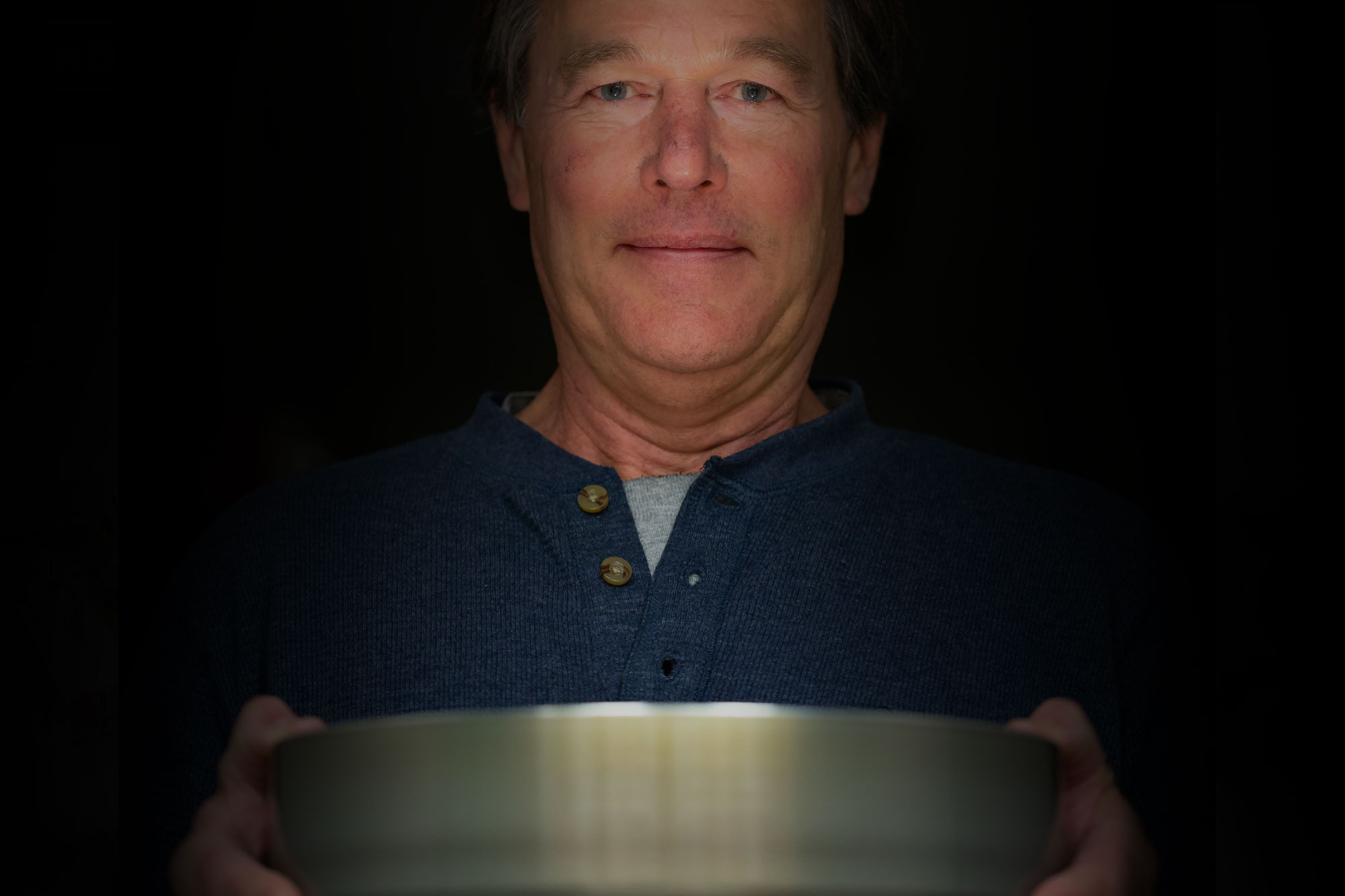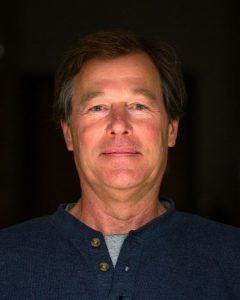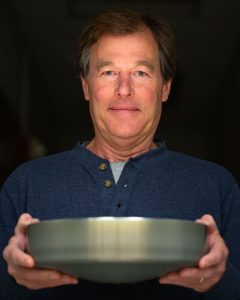
Retiring botanist studied how plant’s xylem tissue carries phenomenal amounts of water to tree leaves where it evaporates and influences regional weather patterns.
John Sperry grew up in Normal, Illinois, but his interest in plants–eventually their vascular function–would propel him into work that was far from standard in botany via Duke University and, eventually Harvard where he earned his PhD. At Harvard his Swiss-born mentor Martin Zimmermann was considered among the top plant physiologists in the world and a scholar whom Sperry credits with, more than anyone else, “showing him how” to do research. Even so Zimmermann strongly questioned the ability of Sperry’s proposed, novel technique to measure the blockage of vascular flow by cavitation.
 It was the ultimate success of that technique and new discoveries of how vascular tissues, or xylem in particular, function in conducting water and dissolved nutrients upward from roots, that would become the subject of Sperry’s PhD thesis. And it was that thesis and the questions it spawned that laid the foundation of all the research he would do for the next 30+ years, including a stint as a post-doctoral researcher at the University of Vermont prior to his arrival at the University of Utah in 1989.
It was the ultimate success of that technique and new discoveries of how vascular tissues, or xylem in particular, function in conducting water and dissolved nutrients upward from roots, that would become the subject of Sperry’s PhD thesis. And it was that thesis and the questions it spawned that laid the foundation of all the research he would do for the next 30+ years, including a stint as a post-doctoral researcher at the University of Vermont prior to his arrival at the University of Utah in 1989.
“As humans, we are acutely aware of the importance of maintaining vascular function,” Sperry’s Research Statement reads. “To plants it is no less critical. My laboratory investigates hydro-vascular structure and function in plants in relation to their ecology, physiology, and evolution.” The scale of this function in plants is, he explains, a “phenomenal process. The sheer quantity of water moved through plants often exceeds river flow on a watershed scale,” he explains. “The plant’s xylem tissue carries all of this water to the leaves where it evaporates and influences regional weather patterns.”
It takes “watershed scale” flow for plants to obtain CO2 from the atmosphere through their open stomata. It’s counter-intuitive, but the transport is driven by negative liquid water pressure, “a remarkable fact,” says Sperry “that will always irritate physicists” who often aren’t as familiar with metastable fluids as is a plant physiologist.
Sperry and his lab study how plant form and function have evolved. To do this they have developed more efficient technologies for the larger data sets required. Sperry custom designed centrifuge rotors to quickly expose the vascular system of plants to a known negative pressure. This in turn has allowed him to create the kinds of vulnerability curves which improve prediction of plant water use and to help move his research toward macro applications in forests to predict plant responses to climate change.
What does the coordination look like between regulation of photosynthesis and environmental conditions? The answer lies in predicting what the stomata will do. Stomata are typically found in the epidermis of plant leaves. Specialized “guard cells” surround stomata and function to open and close stomatal pores, balancing the trade-off of water evaporation for required carbon dioxide.
“We … concentrate on the fundamental carbon-for-water trade-off that confronts all terrestrial plants,” continues Sperry. “Photosynthesis requires the plant surface to be porous to CO2 diffusion, but at the cost of also being porous to evaporative water loss.” Indeed, the xylem has been called “the vulnerable pipeline,” part of an elaborate system that includes “a transport system that teeters on the edge of physical possibility.” Failed water transport, or “cavitation,” is caused by water stress or freezing. Over the years, Sperry has learned that some plants are more vulnerable to this kind of “spectacular failure” than others. “This turns out to be part of the answer to the question of why some plants grow where they do when others cannot,” says Sperry. Vulnerability to cavitation provides the key to predicting how stomata respond to environmental cues, a missing element that Sperry and colleagues have integrated into predictive models for how plants respond to their environment.
 It’s not surprising then that Sperry’s work in plant hydraulics–the water stresses and trade-offs they face–has had a profound impact on predicting how rapid environmental change will affect the future of plants and forests. This according to U ecologist and Sperry colleague William “Bill” Anderegg. Before his own appointment in Biology, Anderegg, who was studying Colorado forests, spent time in Sperry’s lab. There he learned first-hand what was confirmed later for him about Sperry’s mentoring of young researchers.
It’s not surprising then that Sperry’s work in plant hydraulics–the water stresses and trade-offs they face–has had a profound impact on predicting how rapid environmental change will affect the future of plants and forests. This according to U ecologist and Sperry colleague William “Bill” Anderegg. Before his own appointment in Biology, Anderegg, who was studying Colorado forests, spent time in Sperry’s lab. There he learned first-hand what was confirmed later for him about Sperry’s mentoring of young researchers.
“I attended a major conference in the field recently,” says Anderegg, “where there was a ‘mentor tree’–an artistic set of wooden branches where young scientists anonymously wrote the name of someone who had changed their career…. John’s name was all over the tree and was the most frequent name by far.”
Sperry will retire from the University of Utah in December, so it’s a time to look back on a career that started, in retrospect, as early as kindergarten in his hometown of Normal. “Of course I was also obsessed with being a truck driver,” he adds. “But I did draw lots of trees and enjoyed watching our teacher demonstrate the ascent of food coloring in the transpiration stream of a celery stalk.”
But like a true scientist he is always looking forward as well, not just finding a home for that centrifuge with the custom-made rotors, but enlisting the programming skills of undergraduate lab associate Henry Todd. Todd, together with lab mates Martin Venturas and Yujie Wang, is facilitating climate change simulations of 520 combinations of 8 species in 20 sites across the country based on six climate projections and two emissions scenarios … over 30 years.
John Sperry will not be parsing through this kind of macro data for much longer, limiting himself to just a few more papers and farewell meetings. Retirement will allow him more time to adventure with his wife Holly in their truck camper and to be in his favorite laboratory: the outdoors. He and his canoeing buddies also look forward to expanding their summer-long explorations of northern wilderness, a place where you can travel over 600 miles under your own steam and not see another soul for a month and a half. Sperry is harking to the dictum: “no one on their death bed wishes that they had spent more time at work.”
By David Pace
– First Published in OurDNA Magazine, Fall 2019
